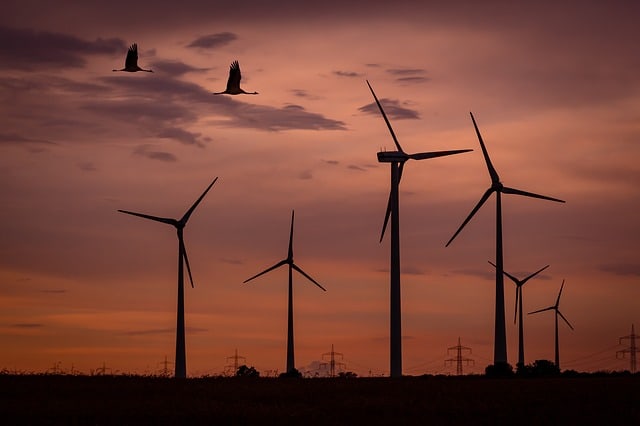According to a new information by WindEurope, Europe added 4.5 Gigawatts of new wind capacity in 2018, but lower by 26% in the first half of 2017, which some say it is a “worry development” for the market.
It is important to know that about a total 3.3GW worth of new onshore wind was installed in Europe during the first half of the year, which was led by Germany, which installed about 1.6GW, which is almost triple to the next country, France, which installed 605 MW. The third country is Denmark, which installed 202 MW.
Off the coasts, the amount of offshore wind where slightly good, as about 1.1 GW was installed led by the UK 911 MW which saw the 573 MW Race Bank Offshore Wind Farm brought online in June.
The offshore industry is still progressing and at its early stage, but even though, it is save to put critics to it in the right way. They are about four countries does not have offshore wind capacity – Belgium with 175 MW, Denmark with 28 MW, Spain with 5 MW, and France with only 1 MW.
It is also important to keep at heart that, WindEurope — the wind energy trade body for Europe — expects a total of 10.2 GW of new onshore wind capacity to be installed and 3.3 GW worth of offshore wind, bringing its 2018 forecast to a total of 13.5 GW of wind capacity installed in 2018.
“We are on track for a solid year in new wind farm installations but the growth is driven by just a handful of markets,” the WindEurope Chief Policy Officer Pierre Tardieu stated. He also added that he believes the “figures also mask some worrying trends.”
“France has installed a lot of new onshore wind this year but they haven’t issued a single new permit for onshore wind permit in the last eight months because of an administrative issue – which has also resulted in their latest auction being under-subscribed. So there’ll be a drop-off in their new build now, creating uncertainty in the supply chain. In Germany, it’s good that projects now need a permit to bid into onshore auctions, but that rule now needs to be made permanent. Also, there’s no clarity yet on when the 4 GW new onshore wind promised in the coalition agreement for 2019-20 is going to be auctioned. And the new Government is slow in confirming the auction volumes beyond that. Like all Member States, they now need to give five years’ visibility on future auction timetable and volumes – under the terms of the new Renewables Directive.” He said.
Tradieu further added this: “This visibility is key to the supply chain and to keep wind energy jobs and growth in Europe. Investments in manufacturing, skills and R&D only happen when governments give long-term visibility to the supply chain. This clarity helps them to make new investment decisions and bring down costs. Addressing these issues will be key to enable Europe to meet its target of 32% renewable energy by 2030 cost-effectively. And in offshore wind, Europe is too dependent on the UK, which is striding ahead in current installations and in committing to future volumes,” added WindEurope’s Tardieu. “By contrast, the rate of new installations has slowed down in Germany. Other countries also need to beef up and speed up their plans on offshore wind.”
One of the main concern in Europe which is a big concern to WindEurope is the over-reliance on one country or a particular region; as a result, Andrew Canning, the organization’s Press and Communications Manager spoke via email – he said: “Our main point at the moment is that the European wind market is still heavily geographically concentrated (UK, France, Germany, etc.).”
Canning further went on to explained that “Europe is too dependent on the UK when it comes to offshore wind and in France and Germany there are some worrying trends,” as Tardieu highlighted above. “In terms of other countries, the outlook up to 2030 means we expect growth in countries like Spain, Italy, Sweden and Poland.”
In order to end the menace of over-dependence, European Union (EU) has enacted on new renewable energy target of 32% which, while well under what many campaigners and even some EU Member States had been calling for, is nevertheless better than nothing (and better than the previous 27%). This allows the EU to begin focusing on how to bring about this new target, which gives the wind energy the needed clarity.
Similar clarity was also recently provided by the UK Government in announcing new competitive auctions for the offshore wind sector (and remote island wind providers) beginning in May 2019, and repeating every two years, with the intention of adding between 1 and 2 GW every two years.
This burgeoning clarity out to 2030 is not just happening in the UK. Denmark has set a target of reaching 55% renewable energy by 2030, which is set to include 2.4 GW worth of new offshore wind capacity, and Lithuania has set a target of 45% renewable energy in its energy mix by 2030 and 100% by 2050, with wind energy set to account for over half.






